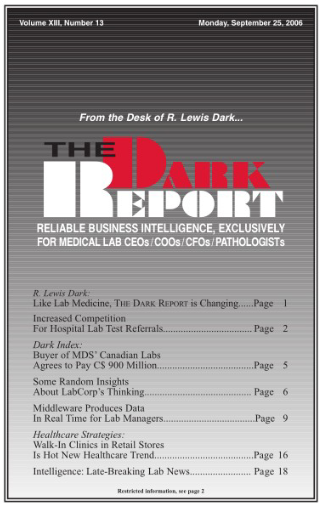CEO SUMMARY: Having scooped up a number of mid-sized laboratory companies in recent years, Laboratory Corporation of America is working to integrate these operations and continue to expand its market share. In a recent conversation with financial analyst Bill Bonnello of Wachovia Securities, LabCorp executives discussed a variety of topics and trends in the laboratory …
Some Random Insights About LabCorp’s Thinking Read More »
To access this post, you must purchase The Dark Report.


